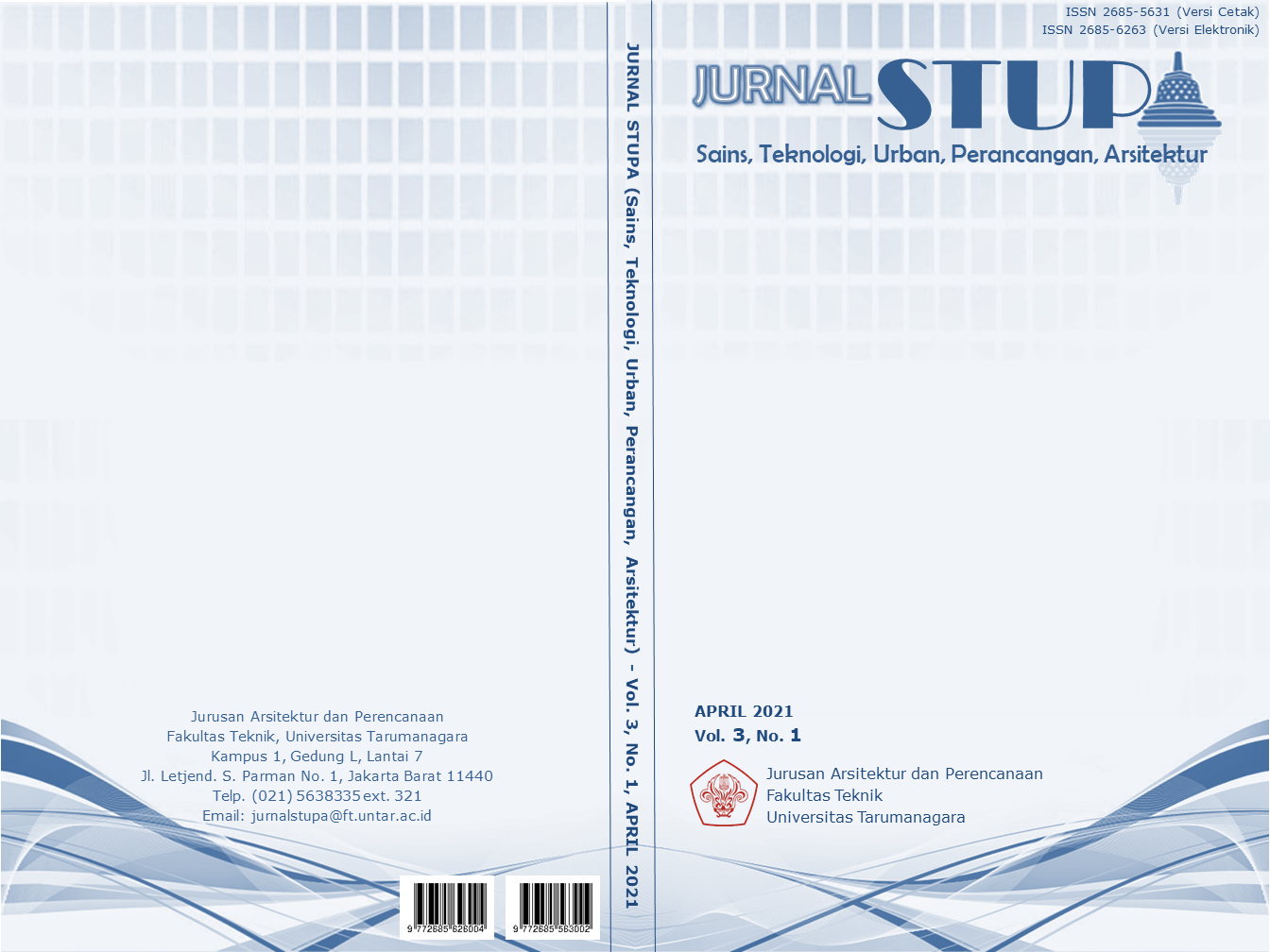PENGEMBANGAN HUNIAN DAN PERTANIAN VERTIKAL DI BOGOR DENGAN PENDEKATAN DESAIN BERBASIS PERILAKU
Isi Artikel Utama
Abstrak
Future Farmer’s Dwelling in Bogor is a new typology which is the result of unification of two main program activity. The project which is located in Bogor, is a new kind of typology in the field of agriculture. The agricultural sector in Indonesia still use the traditional methods although there have been many developments that have occurred in agriculture field, but those advancements have not been implemented yet. As designing this project, the design method used is behavior-based architecture where the method is aimed to understand the behavioral habits of building users. As for the design strategies such as implementation of the newest methods and technology in agriculture like the efficiency of land area with the use of vertical farming methods, to save the amounts of water being used through hydroponic techniques which are also assisted by technology such as automatic regulation of water use which can be timed through a device. It is hoped that from the combination of all the methods can make an improvement for farmers productivity.
Keywords: Farmers dwelling; Vertical Farming; Behavior; Hydroponic; Agriculture Technology
Abstrak
Hunian Petani Massa Depan di Bogor merupakan sebuah bentuk tipologi baru yang berasal dari penggabungan dua buah program kegiatan utama. Proyek yang berlokasi di Bogor ini merupakan sebuah hal yang baru dalam bidang hunian dan agrikultur. Bidang agrikultur di Indonesia mayoritas masih menggunakan metode dan cara tradisional dalam prakteknya walaupun sudah banyak perkembangan-perkembangan yang sudah terjadi dalam bidang tersebut namun kemajuan ini masih belum fasih diterapkan di seluruh Indonesia. Metode perancangan yang digunakan adalah arsitektur berdasar perilaku dimana dengan metode tersebut ditujukan untuk memahami kebiasaan perilaku dari calon pengguna bangunan. Adanya strategi desain berupa penerapan perkembangan metode dan teknologi di bidang agrikultur seperti penggunaan luas lahan yang efisien dengan metode pertanian vertikal, penggunaan jumlah air yang efisien melalui teknik hidroponik yang juga dibantu teknologi seperti pengaturan otomatis penggunaan air yang dapat diautur waktunya melalui sebuah perangkat. Diharapkan agar perpaduan tersebut dapat meningkatkan produktivitas dari para petani yang menggunakan fasilitas pada proyek ini.
Rincian Artikel
Referensi
Anon., n.d.VerticalFarming. [Online]
Available at: https://www.verticalfarming.com/definition-and-background/
[Accessed 20 December 2020].
Garcia, D. & Briceno, C., (2018). Vertical Farming Sustainability and Urban Implications. Uppsala University: Department of Earth Sciences.
Hanif, S., Ahmad, S. T. & SAleem, S. S., (2015). The need to build upwards: A study on perception of vertical/apartment housing among middle income group of lahore. Vidyabharati International Interdisciplinary Research Journal , 4(2), pp. 39-57.
Horvath, M., (2018). Vertical Farming, What's the Deal Anyway?. Food Unfolded, 29 November.
Kalantari, F., Tahir, O. M., Lahijani, A. M. & Shahaboddin, K., (2017). A Review of Vertical Farming Technology: A Guide for Implementation of Building Inetegrated Agriculture in Cities. Advanced Engineering Forum 24:76-91. DOI:10.4028/www.scientific.net/AEF.24.76
Pintos, P., (2019). Floating Farm Dairy / Goldsmith Company. ArchDaily.
Pintos, P., (2020). S*Park / Tres Birds. https://www.archdaily.com/942654/s-star-park-tres-birds
Royston, R. M. & P, P. M., (2018). Vertical Farming: A Concept. International Journal of Engineering and Techniques, 4(3). 500-506
Suparwoko & Taufani, B., (2017). Urban farming construction model on the vertical building envelope to support the green buildings development in Sleman, Indonesia. Procedia Engineering 171, pp. 258-264. https://doi.org/10.1016/j.proeng.2017.01.333
Sutanto, A., (2020). Peta Metode Desain. Jakarta: Universitas Tarumanegara.
Swasto, D. F., (2016). Vertical Living Opportunities and Challenges for Low-Income People in Southeast Asia Case of Indonesia. DOI: 10.18502/kss.v3i5.2330



